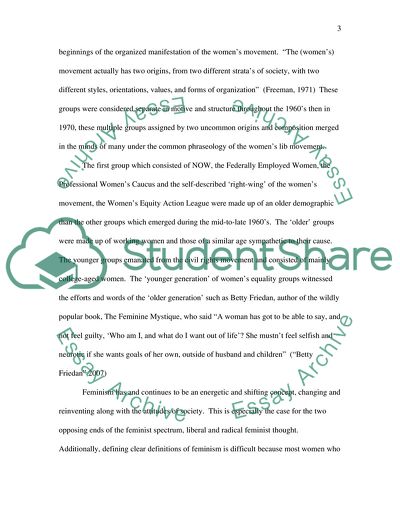Cite this document
(The History of the Woman's Liberation Movement Essay, n.d.)
The History of the Woman's Liberation Movement Essay. Retrieved from https://studentshare.org/gender-sexual-studies/1710903-the-history-of-the-womans-liberation-movement-in-the-united-states-from-the-1960s-to-the-present
The History of the Woman's Liberation Movement Essay. Retrieved from https://studentshare.org/gender-sexual-studies/1710903-the-history-of-the-womans-liberation-movement-in-the-united-states-from-the-1960s-to-the-present
(The History of the Woman'S Liberation Movement Essay)
The History of the Woman'S Liberation Movement Essay. https://studentshare.org/gender-sexual-studies/1710903-the-history-of-the-womans-liberation-movement-in-the-united-states-from-the-1960s-to-the-present.
The History of the Woman'S Liberation Movement Essay. https://studentshare.org/gender-sexual-studies/1710903-the-history-of-the-womans-liberation-movement-in-the-united-states-from-the-1960s-to-the-present.
“The History of the Woman'S Liberation Movement Essay”. https://studentshare.org/gender-sexual-studies/1710903-the-history-of-the-womans-liberation-movement-in-the-united-states-from-the-1960s-to-the-present.


